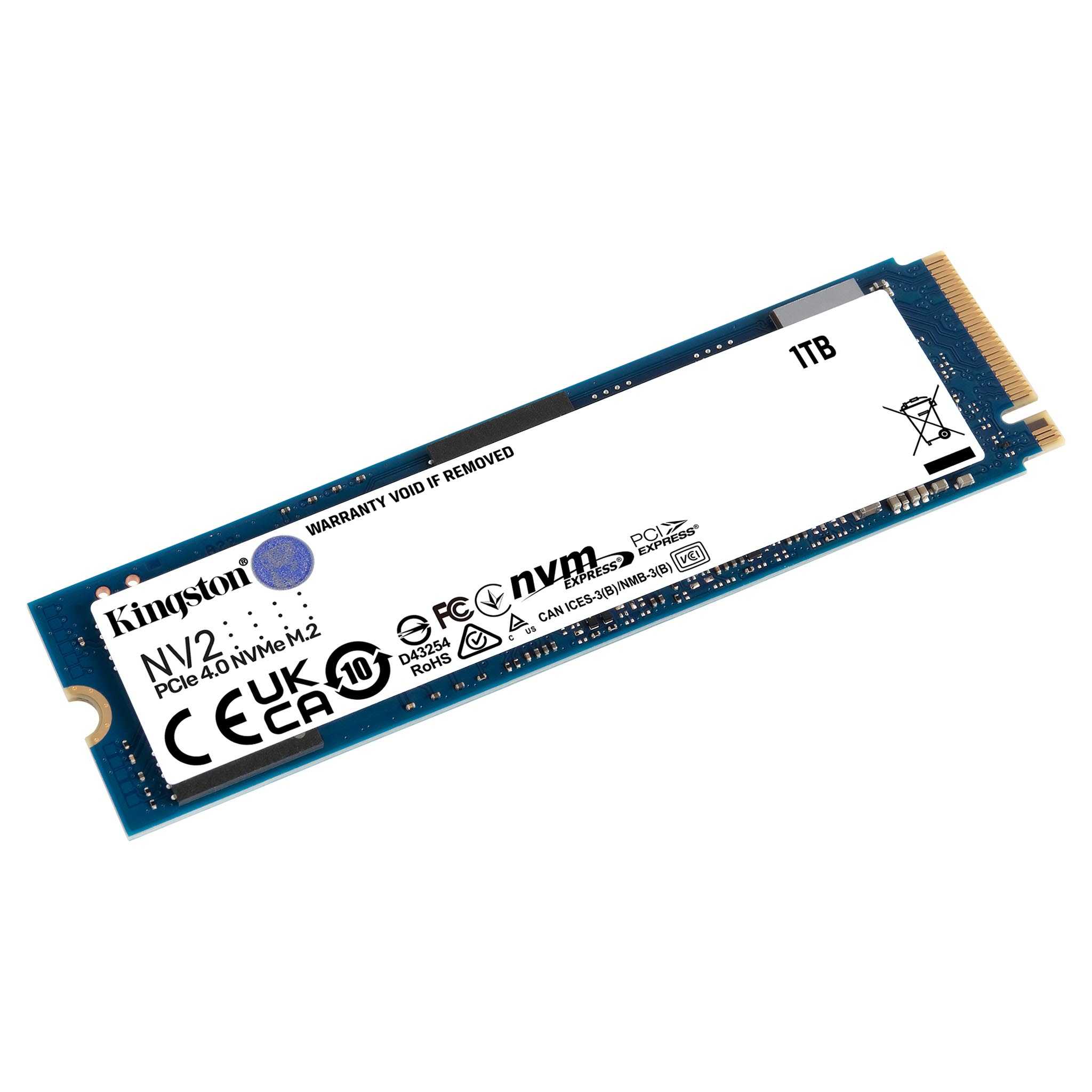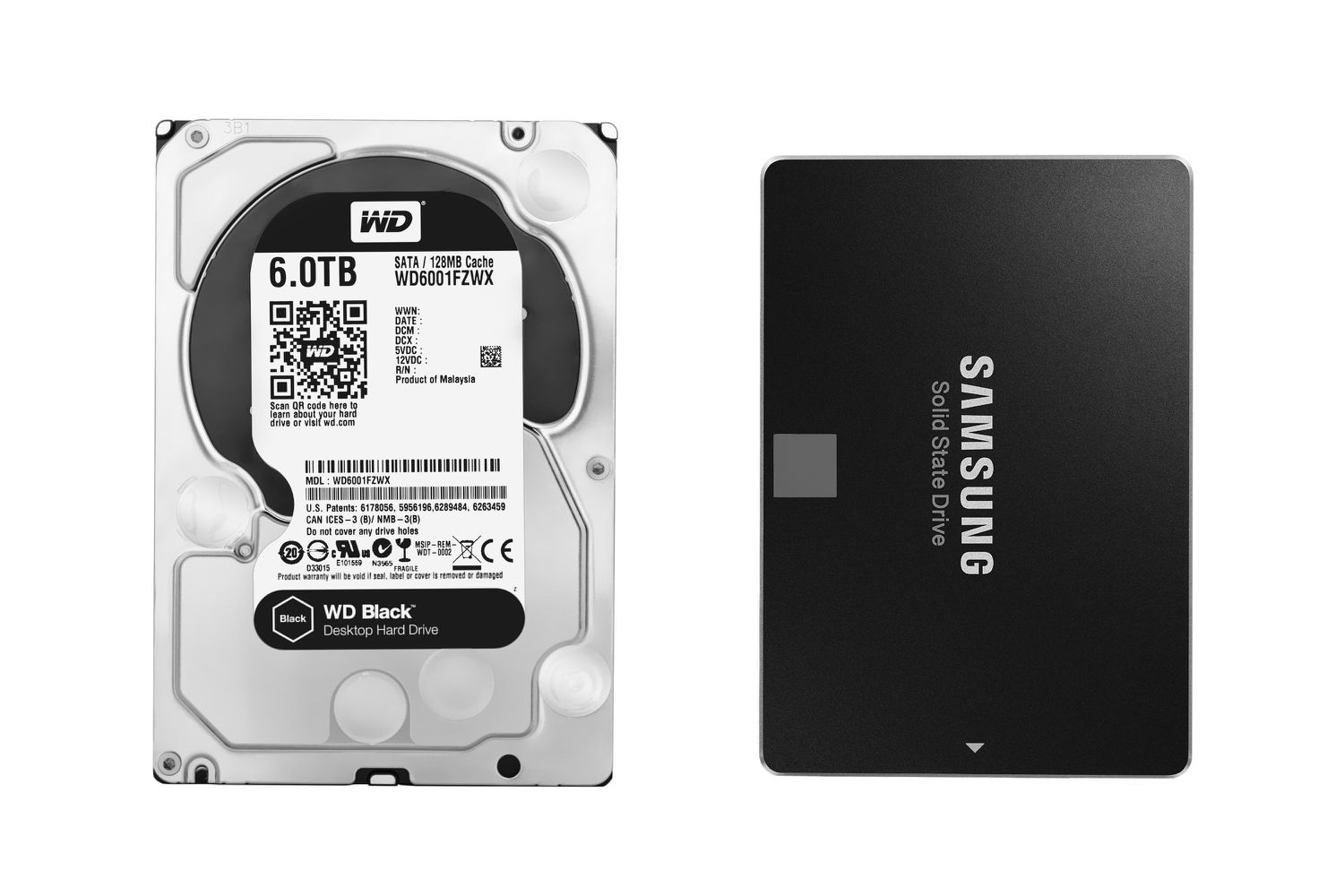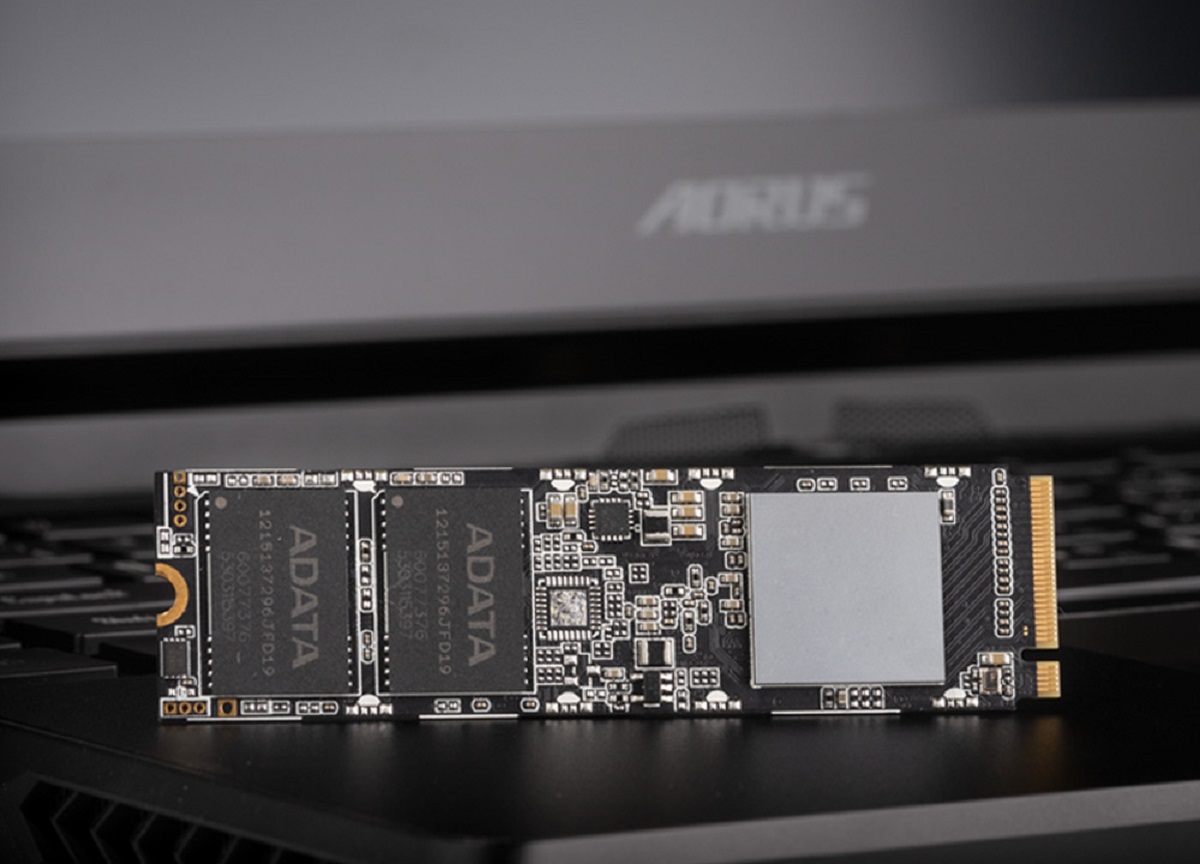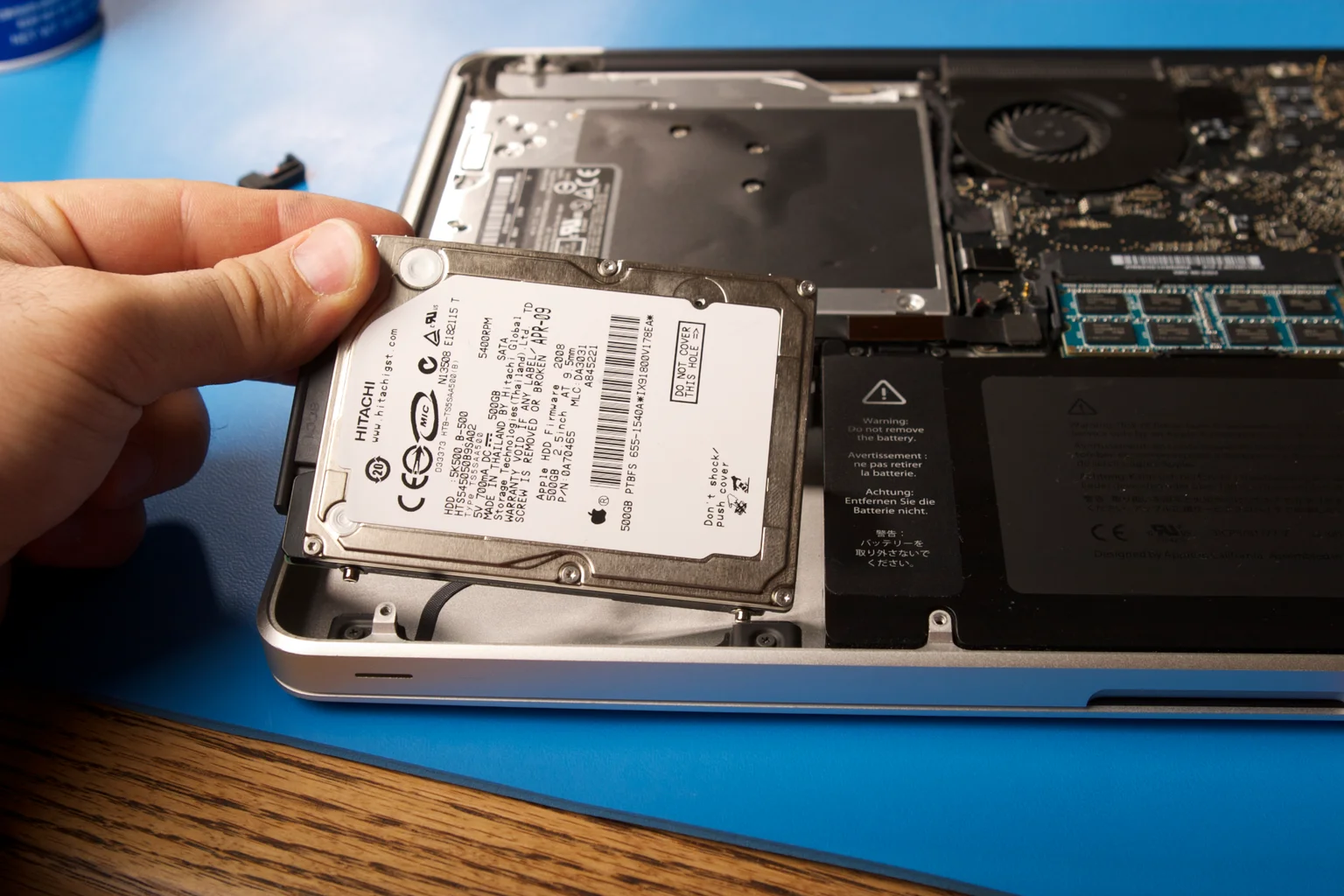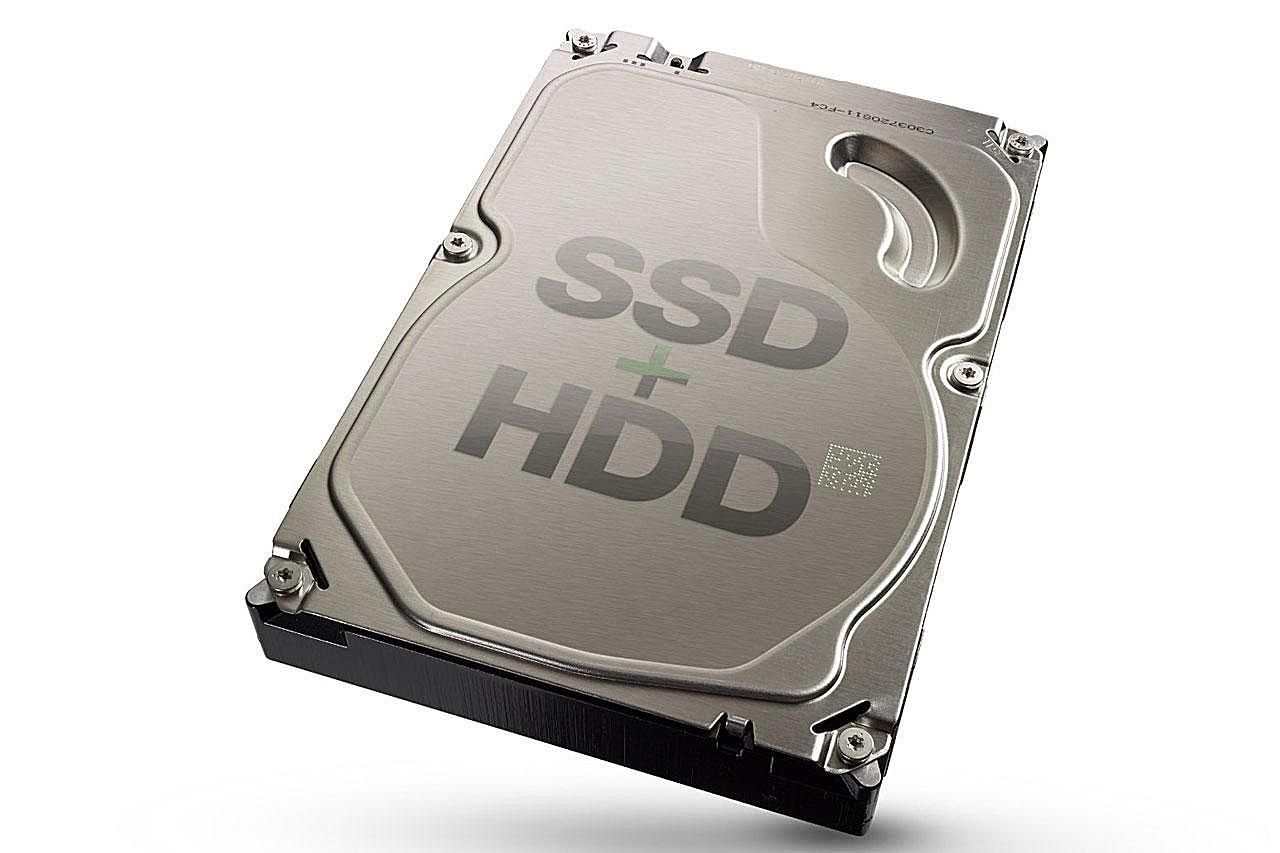Introduction
Welcome to the world of solid-state drives (SSDs)! If you’re looking to enhance your computer’s performance and storage capabilities, you’ve come to the right place. SSD drives have revolutionized the way we use and store data, offering lightning-fast speeds and greater reliability than traditional hard disk drives (HDDs). In this article, we will explore the concept of combining SSD drives to further boost performance and capacity.
Before we delve into the process of combining SSD drives, let’s first understand what exactly an SSD drive is. Unlike HDDs, which use spinning platters and magnetic disks to store data, SSD drives utilize flash memory to store and retrieve information. This allows for significantly faster data access times, resulting in quicker boot-up times, improved software loading speeds, and reduced file transfer times. Additionally, SSD drives are more durable and less susceptible to mechanical failures, making them a reliable storage solution for both personal and professional use.
So, why would you want to combine multiple SSD drives? The answer lies in the desire to achieve even greater performance and storage capabilities. By combining multiple SSD drives, you can harness the power of parallel processing, spreading the workload across multiple drives and improving overall system responsiveness. This can be especially beneficial for tasks that require intensive data processing, such as video editing, gaming, and large-scale data analysis.
However, before you jump into combining SSD drives, there are a few things you should consider. Firstly, it’s essential to ensure compatibility between the SSD drives you plan to combine. This includes checking if they have the same interface (e.g., SATA, NVMe), capacity, and speed. Additionally, make sure your computer’s motherboard supports the desired combination method, such as RAID or Windows Storage Spaces. Taking these precautions will help prevent any compatibility issues and ensure a smooth integration of your SSD drives.
In the following sections, we will explore various methods for combining SSD drives and provide step-by-step guides for each method. We will discuss RAID 0, a common method that focuses on data striping and increased performance, as well as Windows Storage Spaces, a built-in feature in Windows that enables drive pooling and data redundancy. Furthermore, we will explore software solutions that offer flexibility and customization options for combining SSD drives.
By the end of this article, you will have a good understanding of the advantages and disadvantages of combining SSD drives, as well as the knowledge needed to implement the method that best suits your needs. So, let’s get started and unlock the full potential of your SSD drives!
What is a SSD Drive?
Before we delve into the world of combining SSD drives, let’s first understand what exactly an SSD drive is. An SSD drive, or solid-state drive, is a storage device that uses flash memory to store and retrieve data. Unlike traditional hard disk drives (HDDs), which rely on spinning platters and magnetic disks, SSD drives have no moving parts. This fundamental difference is what sets SSD drives apart from HDDs and contributes to their exceptional performance and reliability.
The use of flash memory in SSD drives allows for faster data access speeds compared to HDDs. SSDs can read and write data at an incredible rate, resulting in significantly reduced boot-up times, improved software loading speeds, and faster file transfer rates. This makes SSD drives especially desirable for those seeking to optimize their computer’s performance and enhance productivity.
In addition to their speed, SSD drives offer several other benefits. One such advantage is their durability. Since SSD drives have no mechanical components, they are more resistant to physical shock and less susceptible to data loss due to impact or vibration. This makes them an ideal storage solution for laptops, as they can withstand everyday movements and travel without compromising data integrity.
Furthermore, the absence of moving parts in SSD drives results in silent operation. Unlike HDDs, which emit noise due to the spinning disks and mechanical read/write heads, SSD drives operate silently, ensuring a quieter computing experience. This is particularly advantageous for those who value a noise-free environment, such as content creators, musicians, and individuals who require a peaceful workspace.
Another notable advantage of SSD drives is their energy efficiency. Due to their design and lack of moving parts, SSD drives consume less power than HDDs. This translates to longer battery life for laptops and decreased electricity costs for desktop setups. By using SSD drives, you not only improve overall system performance but also contribute to a more sustainable and eco-friendly computing experience.
It’s also important to mention that SSD drives come in various form factors and interfaces. Whether you need a 2.5-inch SATA SSD for a laptop upgrade or an M.2 NVMe SSD for a desktop build, there is a wide array of options available to suit your specific needs and hardware compatibility.
In summary, SSD drives are high-performance storage devices that utilize flash memory to store and retrieve data. With their lightning-fast speeds, exceptional reliability, durability, and energy-efficient operation, SSD drives have become the preferred choice for users seeking to optimize their computer’s performance. By combining SSD drives, you can further enhance your system’s capabilities, allowing for increased storage capacity, improved responsiveness, and a seamless computing experience.
Benefits of SSD Drives
Solid-state drives (SSDs) offer a multitude of benefits over traditional hard disk drives (HDDs). Their superior performance, reliability, and efficiency have made them an increasingly popular choice among individuals and businesses alike. Let’s explore some of the key advantages of using SSD drives.
One of the primary benefits of SSD drives is their remarkable speed. Unlike HDDs, which rely on mechanical components to read and write data, SSD drives use flash memory to store and retrieve information. This enables them to deliver significantly faster data transfer rates, resulting in quicker boot-up times, faster software loading speeds, and seamless multitasking. Whether you’re a gamer looking for reduced loading times or a professional needing faster rendering and data analysis, the speed advantage of SSD drives can greatly enhance productivity and user experience.
Reliability is another major advantage of SSD drives. With no moving parts, SSDs are less susceptible to mechanical failures and physical damage. This makes them more robust and reliable than HDDs, especially in environments where shocks, vibrations, and temperature variations are common. Additionally, SSD drives are more resistant to magnetic fields, reducing the risk of data corruption or loss. Whether you’re using an SSD for personal or business purposes, the enhanced reliability of these drives ensures peace of mind and data integrity.
Energy efficiency is a notable benefit of SSD drives. As SSD drives do not require motors or spinning disks like HDDs, they consume significantly less power. This translates into lower energy consumption, longer battery life for laptops, and reduced electricity costs for desktop computers. By using SSD drives, you not only enjoy enhanced performance but also contribute to a greener and more sustainable computing environment.
Another advantage of SSD drives is their compact size and lightweight design. SSDs are available in various form factors, including 2.5-inch SATA drives and M.2 NVMe drives, which are smaller and lighter than their HDD counterparts. This makes them an ideal choice for laptops, ultrabooks, and small form factor PCs where space is limited. The compact size of SSD drives also makes them easier to install and transport, allowing for greater flexibility and convenience.
Last but not least, SSD drives offer quiet operation. Since there are no moving parts involved, SSDs do not generate noise or vibrations during operation. This is in stark contrast to the spinning disks and read/write heads of HDDs, which can produce noticeable sound. For individuals seeking a noise-free computing environment, such as content creators, audio engineers, and those working in quiet office spaces, the silent operation of SSD drives is particularly appealing.
To sum it up, the benefits of SSD drives are clear. Their speed, reliability, energy efficiency, compact size, and silent operation make them a superior choice for storage needs. By upgrading to SSD drives, you can enjoy faster performance, increased productivity, and enhanced user experience in both personal and professional computing environments.
Types of SSD Drives
When it comes to solid-state drives (SSDs), there are various types available in the market, each with its own unique features and advantages. Understanding the different types of SSD drives can help you choose the one that best fits your specific needs and system requirements. Let’s explore some of the common types of SSD drives.
- SATA SSD: SATA (Serial ATA) SSDs are the most widely used and readily available type of SSD drives. These drives connect to the computer using the same interface as traditional hard disk drives (HDDs), making them compatible with most desktops and laptops. SATA SSDs offer improved performance and reliability over HDDs, but their speed is limited by the interface’s bandwidth. They come in the 2.5-inch form factor and are an excellent choice for upgrading older systems or adding storage capacity to existing setups.
- NVMe SSD: NVMe (Non-Volatile Memory Express) SSDs are the latest and fastest type of SSD drives available. Designed to take advantage of the PCI Express (PCIe) interface, NVMe SSDs offer significantly higher data transfer rates compared to SATA SSDs. These drives are capable of delivering lightning-fast speeds and reduced latency, making them ideal for tasks that require intensive data processing, such as gaming, video editing, and 3D rendering. NVMe SSDs are available in the M.2 or PCIe card form factor and require a compatible motherboard with an available M.2 or PCIe slot.
- mSATA SSD: mSATA (mini-SATA) SSDs are smaller in size and are commonly used in ultrabooks and small form factor PCs. These drives use the same interface as SATA SSDs but have a smaller form factor, making them suitable for compact systems where space is limited. mSATA SSDs deliver improved performance over traditional HDDs and are a good choice for upgrading older laptops or mini-PCs.
- M.2 SSD: M.2 SSDs are compact and versatile SSD drives that offer high performance and compatibility with modern systems. These drives connect directly to the motherboard, eliminating the need for cables and dedicated drive bays. M.2 SSDs are available in both SATA and NVMe variants, offering different performance levels depending on the interface used. This form factor is commonly found in modern laptops, ultrabooks, and desktop motherboards with M.2 slots.
- External SSD: External SSD drives provide a portable and convenient storage solution. These drives connect to the computer via USB or Thunderbolt ports, allowing for easy plug-and-play functionality. External SSDs are available in various form factors, including 2.5-inch enclosures or compact USB thumb drive-like designs. These drives offer the flexibility of transferring data between systems or expanding storage capacity without the need to open up your computer.
In summary, the different types of SSD drives, such as SATA SSDs, NVMe SSDs, mSATA SSDs, M.2 SSDs, and external SSDs, cater to different needs and system requirements. Whether you need to upgrade an existing system, build a high-performance gaming rig, or have portable storage on the go, there is an SSD type that can meet your needs. Consider the form factor, interface, and compatibility with your system before investing in an SSD drive to ensure proper integration and optimal performance.
Reasons for Combining SSD Drives
Combining solid-state drives (SSDs) can bring a range of benefits to your computer system, unlocking even greater performance and storage capabilities. Here are some of the key reasons why you might consider combining SSD drives.
- Increased Performance: By combining multiple SSD drives, you can harness the power of parallel processing. This means that data can be distributed and processed simultaneously across the drives, resulting in improved system responsiveness and faster data access. Whether you’re working with large files, running resource-intensive applications, or engaging in high-speed gaming, combining SSD drives can significantly boost your system’s performance and overall user experience.
- Enhanced Storage Capacity: Combining SSD drives allows you to increase your overall storage capacity. SSD drives are available in various capacities, and when combined, their storage spaces add up. This is especially beneficial if you work with large media files, have an extensive digital library, or require ample space for virtual machines and data backups. With combined SSD drives, you won’t have to worry about running out of storage space anytime soon.
- Redundancy and Data Protection: Through combining SSD drives, you can implement redundancy measures to ensure the safety of your data. Redundancy involves creating multiple copies of data on separate drives, reducing the risk of complete data loss in the event of a drive failure. By using techniques like RAID (Redundant Array of Independent Disks) or Windows Storage Spaces, you can configure your SSD drives to automatically replicate data across multiple drives, providing an added layer of data protection and peace of mind.
- Improved Workload Distribution: Combining SSD drives allows for efficient workload distribution across the drives. When performing tasks that involve heavy data processing, such as video editing or rendering complex simulations, distributing the workload across multiple SSD drives can significantly reduce the time it takes to complete these tasks. This is because the drives can work in parallel, processing different portions of the data simultaneously, resulting in faster processing times and improved productivity.
- Flexibility and Customization: Combining SSD drives offers tremendous flexibility and customization options. Depending on the method you choose, such as RAID or software solutions like storage virtualization, you can configure different drive setups to suit your specific needs. For example, RAID 0 striping can provide maximum performance by spreading data across all drives, while RAID 1 mirroring can offer redundancy and data protection by creating a duplicate copy of data on each drive. This level of customization allows you to tailor your SSD drive combination to your exact requirements.
In summary, combining SSD drives can bring a range of advantages, including increased performance, enhanced storage capacity, data redundancy and protection, improved workload distribution, and flexibility in configuration. Whether you’re a gamer, content creator, professional, or simply a power user, combining SSD drives can help you unlock the full potential of your computer system, providing faster speeds, ample storage, and a reliable data storage solution.
Things to Consider Before Combining SSD Drives
Before you jump into combining solid-state drives (SSDs) and reaping the benefits of increased performance and storage capacity, there are several essential factors to consider. By taking these considerations into account, you can ensure a smooth and successful integration of your SSD drives. Let’s explore the key things to consider before combining SSD drives.
- Compatibility: Ensure that the SSD drives you plan to combine are compatible with each other. Factors to look for include the drive interface (such as SATA or NVMe), capacity, speed, and form factor. Combining drives with incompatible interfaces or vastly different performance characteristics may cause issues or result in decreased overall performance.
- System Support: Check if your computer’s motherboard supports the method you plan to use for combining SSD drives. For example, if you want to use RAID, verify that your motherboard has the necessary RAID controller or supports software RAID configurations. If you plan to use Windows Storage Spaces, ensure that your operating system version supports this feature. Without the proper system support, you may not be able to combine the drives as desired.
- Capacity Planning: Consider your storage needs and plan for the total capacity required after combining the SSD drives. Decide whether you want to use the combined drives as a single large volume or as separate volumes for specific purposes. Keep in mind that some methods, such as RAID 0, will provide the combined capacity of all the drives, while others, like RAID 1, will provide duplicated storage capacity for added data redundancy.
- Data Backup: Before combining SSD drives, it is crucial to back up any important data stored on the drives. Combining drives involves reconfiguring storage settings, which can result in data loss if not handled correctly. Having a backup ensures that your data remains safe and can be easily restored if any unforeseen issues arise during the combination process.
- Performance Considerations: Understand the performance implications of the method you choose for combining SSD drives. Some methods, like RAID 0 striping, focus on maximizing performance but offer no data redundancy. On the other hand, methods like RAID 1 mirroring sacrifice some performance for increased data protection. Consider your priorities and choose a method that aligns with your desired performance and data security needs.
- Budget: Take into account the cost associated with combining SSD drives. Depending on the number and capacity of the drives, along with any additional hardware or software requirements, there may be a cost involved. It’s important to establish a budget and evaluate whether the benefits justify the expenses, keeping in mind your specific requirements and desired outcomes.
By considering these factors before combining SSD drives, you can ensure a successful integration process and fully leverage the benefits of increased performance and storage capacity. Taking the time to evaluate compatibility, system support, capacity planning, data backup, performance considerations, and budget will help you make informed decisions and set the stage for a seamless and efficient SSD drive combination.
Step-by-Step Guide to Combine SSD Drives
Combining solid-state drives (SSDs) can be a powerful way to enhance your computer’s performance and storage capabilities. Here is a step-by-step guide to help you through the process of combining SSD drives.
- Step 1: Prepare Your SSD Drives: Ensure that your SSD drives are properly connected to your computer. For internal drives, make sure they are securely installed in the appropriate drive bays or slots. If you are using external SSDs, connect them to the computer via USB or Thunderbolt ports.
- Step 2: Backup Your Data: Before combining SSD drives, it’s crucial to back up any important data stored on the drives. This provides a safety net in case of any issues during the combination process. Backup your files to an external storage device, a cloud storage service, or another location where you can retrieve them later.
- Step 3: Choose a Combination Method: Decide on the method you want to use for combining the SSD drives. Common methods include RAID (e.g., RAID 0 for performance, RAID 1 for data redundancy), Windows Storage Spaces, or software solutions provided by SSD drive manufacturers. Research and understand the pros and cons of each method to choose the one that best suits your needs.
- Step 4: Configure the Combination Method: Configure the selected combination method according to your desired settings. This may involve setting up RAID arrays, defining storage spaces in Windows Storage Spaces, or installing the software provided by the SSD drive manufacturer. Follow the specific instructions provided for your chosen method to configure the SSD drives accordingly.
- Step 5: Initialize and Format the Combined Drives: Once you have successfully configured the combination method, you may need to initialize and format the combined drives. This process will prepare the newly combined storage space for use by the operating system. Access the Disk Management tool in Windows, or use the software provided by the SSD drive manufacturer, to initialize and format the combined drives with the desired file system (such as NTFS or exFAT).
- Step 6: Verify the Combination: After initializing and formatting the combined drives, verify that the combination was successful. Ensure that the combined storage space is correctly recognized by the operating system and is accessible. You can check this in Disk Management or by exploring the file system to confirm that the combined drives are functioning as expected.
- Step 7: Transfer Data and Test Performance: Once the combination is verified, transfer your data back to the combined SSD drives from your backup location. Test the performance of the combined drives by performing tasks that require data processing or file transfers. Monitor the system’s responsiveness and confirm that the combined SSD drives are providing the expected performance and storage capacity.
- Step 8: Regular Maintenance and Monitoring: Maintain and monitor your combined SSD drives regularly to ensure optimal performance and longevity. Keep an eye on drive health, monitor for any signs of degradation or errors, and perform routine maintenance tasks such as firmware updates and drive optimizations as recommended by the SSD drive manufacturer.
By following this step-by-step guide, you can successfully combine SSD drives and unlock the full potential of your computer system. Remember to back up your data, choose the appropriate combination method, configure the drives accordingly, verify the combination, and regularly monitor and maintain the combined SSD drives for optimal performance.
Method 1: RAID 0
RAID 0, also known as striping, is a common method used to combine solid-state drives (SSDs) for increased performance. It involves spreading data across multiple SSD drives to enhance read and write speeds. By using RAID 0, you can take advantage of parallel processing, which allows data to be processed simultaneously across all SSD drives in the array. Here is a step-by-step guide on how to set up RAID 0 for combining SSD drives.
- Step 1: Check Compatibility: Ensure that your computer’s motherboard supports RAID functionality. Refer to the motherboard’s manual or manufacturer’s website for compatibility information. You may need to enable RAID mode in the BIOS settings before proceeding.
- Step 2: Choose SSD Drives: Select the SSD drives that you want to combine for RAID 0. Ensure that they have the same interface (e.g., SATA or NVMe), capacity, and speed for optimal performance and compatibility.
- Step 3: Backup Your Data: Before setting up RAID 0, it’s essential to back up any important data stored on the SSD drives. Configuring RAID 0 involves reconfiguring the drives and can result in data loss if not done correctly.
- Step 4: Enter RAID Configuration Utility: Restart your computer and enter the RAID configuration utility during the boot process. The key combination to access the utility may vary depending on your motherboard’s manufacturer. Common keys include F2, Del, or F12. Consult your motherboard’s manual for the exact key combination.
- Step 5: Create a RAID 0 Array: In the RAID configuration utility, create a new RAID 0 array. Select the SSD drives you want to include in the array and set the stripe size, which determines the size of the data chunks written across the drives. Consult the motherboard’s manual or the RAID configuration utility’s documentation for guidance on selecting the appropriate stripe size.
- Step 6: Initialize and Format the RAID Array: After creating the RAID 0 array, exit the RAID configuration utility and boot into the operating system. Access the Disk Management tool in Windows or the equivalent tool in your operating system to initialize and format the RAID array with the desired file system (such as NTFS or exFAT).
- Step 7: Test Performance: Transfer your data to the newly created RAID 0 array and test its performance. Perform tasks that involve data processing or file transfers and monitor the system’s responsiveness and speed. You should notice a significant improvement in read and write speeds compared to using a single SSD drive.
- Step 8: Regular Monitoring: Regularly monitor the health and performance of the RAID 0 array. Keep an eye on drive temperatures, check for any signs of degraded performance or errors, and perform any recommended firmware or driver updates provided by the SSD drive or motherboard manufacturer.
By following these steps, you can successfully set up RAID 0 and combine SSD drives to improve your system’s performance through increased read and write speeds. Keep in mind that RAID 0 does not provide data redundancy, so it’s crucial to maintain proper backup systems to protect your data. RAID 0 is an excellent choice for those seeking maximum performance gains from combining SSD drives.
Method 2: Windows Storage Spaces
Windows Storage Spaces is a built-in feature in Windows operating systems that enables users to combine solid-state drives (SSDs) for enhanced storage and data protection. It allows you to create virtual drives, called storage spaces, by pooling together multiple SSD drives. Windows Storage Spaces offers flexibility and redundancy options, making it an excellent choice for combining SSD drives. Here is a step-by-step guide on how to set up Windows Storage Spaces.
- Step 1: Check Compatibility: Ensure that your version of Windows supports Windows Storage Spaces. This feature is available in Windows 10 and Windows Server operating systems. Additionally, verify that your computer’s hardware meets the requirements for using Windows Storage Spaces.
- Step 2: Choose SSD Drives: Select the SSD drives that you want to combine using Windows Storage Spaces. Ensure that the drives have the same interface (e.g., SATA or NVMe) and capacity for optimal performance and compatibility.
- Step 3: Backup Your Data: Before setting up Windows Storage Spaces, it’s crucial to back up any important data stored on the SSD drives. Configuring Storage Spaces involves reconfiguring the drives and can result in data loss if not done correctly.
- Step 4: Open Storage Spaces: Open the Windows Storage Spaces tool by clicking on the Start menu, searching for “Storage Spaces,” and selecting the “Create a new pool and storage space” option.
- Step 5: Create a Storage Pool: In the Storage Spaces tool, click on the “Create a new pool and storage space” option. Select the SSD drives you want to include in the storage pool and click “Create pool.” Choose the resiliency type, which determines the level of redundancy and data protection.
- Step 6: Configure the Storage Space: After creating the storage pool, select the pool and click on the “Create a new storage space” option. Enter a name for the storage space and select the desired layout. In Windows Storage Spaces, you can choose between simple, mirror, and parity layouts based on your redundancy and capacity requirements.
- Step 7: Define the Capacity: Specify the desired capacity for the storage space. If you choose a redundancy option like mirror or parity, the available capacity will be less than the total capacity of the combined SSD drives.
- Step 8: Format the Storage Space: After defining the capacity, select the file system (such as NTFS or ReFS) and the allocation unit size. Click “Create” to create and format the storage space.
- Step 9: Test Performance: Transfer your data to the newly created storage space and test its performance. Perform tasks that involve data processing or file transfers and monitor the system’s responsiveness. Windows Storage Spaces should provide increased storage capacity and, depending on the redundancy level selected, data protection against drive failures.
- Step 10: Regular Monitoring: Regularly monitor the health and performance of the storage space. Check for any signs of degraded performance, errors, or drive failures. Windows Storage Spaces provides notifications and alerts if any issues arise.
By following these steps, you can successfully set up Windows Storage Spaces and combine SSD drives for enhanced storage and data protection. Windows Storage Spaces offers flexibility, allowing you to adjust the pool configuration and add or remove drives as needed. It’s an excellent choice for users seeking a built-in storage solution in Windows that provides redundancy and the ability to combine SSD drives efficiently.
Method 3: Software Solutions
In addition to built-in features like RAID and Windows Storage Spaces, there are various third-party software solutions available for combining solid-state drives (SSDs). These software solutions offer flexibility, customization options, and additional features for combining and managing SSD drives. Here is an overview of the process of using software solutions to combine SSD drives.
- Step 1: Research and Choose Software: Research different software solutions available for combining SSD drives. Look for reputable software that aligns with your specific needs and system requirements. Consider factors such as ease of use, compatibility, features, and the level of customization offered.
- Step 2: Backup Your Data: Before proceeding with any software solution, it’s crucial to back up any important data stored on the SSD drives. Combining drives using third-party software involves reconfiguring the drives, which may result in data loss if not done correctly.
- Step 3: Install and Launch the Software: Download and install the chosen software solution on your computer. Launch the software to begin the process of combining the SSD drives.
- Step 4: Follow Software Instructions: Each software solution will have its own user interface and instructions for combining SSD drives. Follow the software’s instructions carefully, as the exact steps may vary.
- Step 5: Select SSD Drives and Configuration: Within the software, select the SSD drives you want to combine. Choose the desired configuration, such as RAID levels, pooling options, data striping, or redundancy settings. Customize the settings according to your specific needs and preferences.
- Step 6: Initialize and Format the Combined Drives: After configuring the SSD drives, you may need to initialize and format the combined drives. This process prepares the newly created storage space for use by the operating system. Follow the software’s instructions to perform this task within the software or use the operating system’s disk management tool if required.
- Step 7: Test Performance and Functionality: Transfer your data to the combined SSD drives and test their performance and functionality. Perform tasks that involve data processing, file transfers, or other demanding operations. Monitor the system’s responsiveness and ensure that the combined drives are providing the expected performance and storage capacity.
- Step 8: Regular Software Updates and Maintenance: Keep the software solution up to date by installing any available updates or patches. Regularly monitor the health and performance of the combined SSD drives using the software’s monitoring tools. Follow best practices recommended by the software provider to ensure optimal performance and longevity of the storage solution.
Using third-party software solutions provides a flexible and customizable approach to combine SSD drives. These solutions offer additional features and advanced configuration options beyond the built-in features of operating systems. However, thorough research, proper backup measures, and careful attention to software instructions are crucial when using third-party software to avoid any data loss or system issues.
Advantages and Disadvantages of Combining SSD Drives
Combining solid-state drives (SSDs) can bring several advantages to your computer system, but it’s important to consider the potential disadvantages as well. Understanding both the pros and cons of combining SSD drives will help you make an informed decision. Here are the advantages and disadvantages to consider:
Advantages:
- Increased Performance: One of the primary advantages of combining SSD drives is the potential for increased performance. By spreading the workload across multiple drives, you can harness the power of parallel processing and achieve faster data access speeds. This is particularly beneficial for tasks that involve intensive data processing, such as gaming, video editing, and large-scale data analysis.
- Enhanced Storage Capacity: Combining SSD drives allows for increased storage capacity. By pooling the drives together, you can expand the available storage space. This is especially useful if you work with large files, have an extensive digital library, or require ample space for virtual machines and data backups.
- Data Redundancy and Protection: Depending on the combination method chosen, combining SSD drives can provide data redundancy and protection against drive failures. Methods like RAID 1 mirroring or Windows Storage Spaces with redundancy enable the creation of duplicate copies of data on separate drives. This ensures that if one drive fails, data remains accessible on the other drives, reducing the risk of complete data loss.
- Improved Workload Distribution: Combining SSD drives allows for efficient workload distribution. By spreading data across multiple drives, you can distribute the processing load and reduce bottlenecks. This helps to optimize system performance and improve overall responsiveness, making tasks faster and more efficient.
- Flexibility and Customization: Combining SSD drives offers flexibility and customization options. Depending on the combination method used, you can configure the drives to suit your specific needs, such as maximizing performance, emphasizing data protection, or finding a balance between the two. This level of customization allows you to tailor the combination to your requirements.
Disadvantages:
- Noisy Operation: Combining SSD drives can result in increased noise levels compared to using a single drive. Each SSD generates its own noise, and when multiple drives are combined, the overall noise level may be higher. This can be a consideration for individuals seeking a silent computing environment.
- Data Loss Risk: If proper backup measures are not taken, combining SSD drives can increase the risk of data loss. Any failure or error in the combination process or a drive failure in non-redundant configurations can result in data loss. It’s crucial to maintain regular backups to mitigate this risk.
- Higher Cost: Combining SSD drives may require the purchase of additional drives or hardware, depending on the chosen combination method. The cost of acquiring multiple SSD drives and any necessary equipment can be higher compared to using a single SSD drive. It’s important to consider the additional expenses when deciding to combine SSD drives.
- Complexity and Configuration: Combining SSD drives can involve complex setup processes and configuration settings. Depending on the chosen method, understanding the requirements, configuring the drives, and maintaining the combination may require technical knowledge and expertise. This can be a disadvantage for users with limited technical skills.
By considering the advantages and disadvantages of combining SSD drives, you can make an informed decision that aligns with your specific needs and preferences. It’s important to weigh the potential benefits, such as increased performance, enhanced storage capacity, and data redundancy, against the challenges associated with noise, data loss risk, higher cost, and complexity. Ultimately, the decision to combine SSD drives should be based on your specific requirements and the trade-offs involved.
Conclusion
Combining solid-state drives (SSDs) can be a game-changer when it comes to enhancing your computer’s performance and storage capacity. By harnessing the power of parallel processing and spreading the workload across multiple drives, you can experience faster speeds, increased storage capacity, and added data protection.
From the various methods available, such as RAID, Windows Storage Spaces, and third-party software solutions, you have a range of options to choose from based on your specific needs and preferences. RAID 0 offers increased performance by striping data across multiple drives, while Windows Storage Spaces provides flexibility and redundancy. Third-party software solutions offer customization options and additional features.
However, it’s essential to consider the potential drawbacks. Noise levels may increase with the combination of SSD drives, and the risk of data loss should always be mitigated with regular backups. The cost and complexity associated with combining SSD drives also factor into the decision-making process.
In conclusion, combining SSD drives is a powerful technique for maximizing your computer’s potential. Whether you’re a gamer seeking lightning-fast load times, a content creator needing ample storage space, or a professional requiring optimized performance, combining SSD drives can greatly improve your computing experience. By carefully considering the advantages and disadvantages, ensuring compatibility, taking proper backup measures, and understanding the configuration process, you can successfully combine SSD drives and unlock the full potential of your system.









